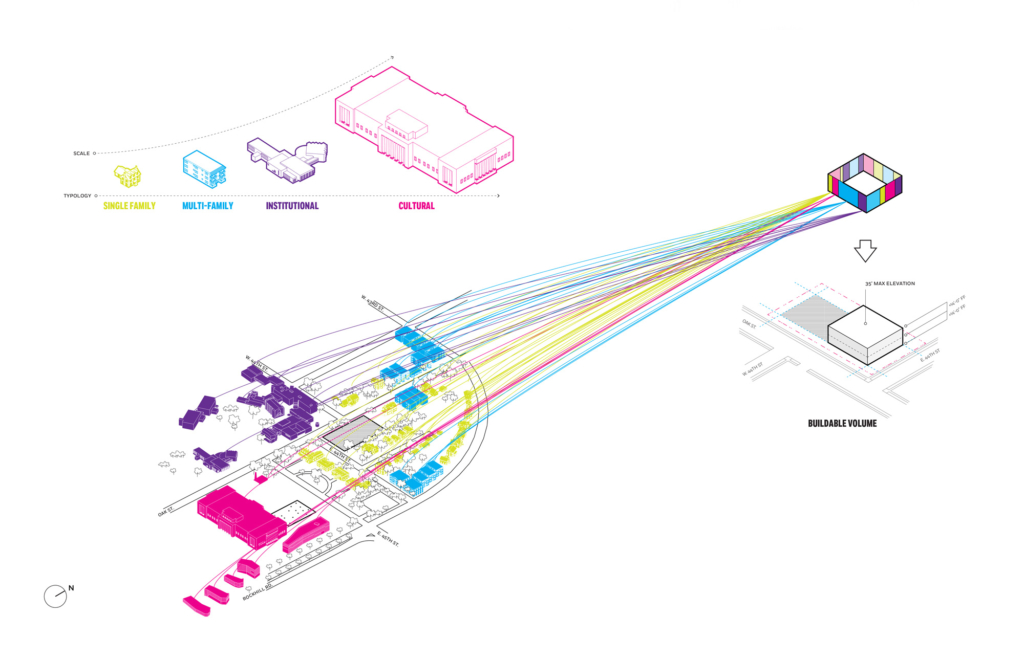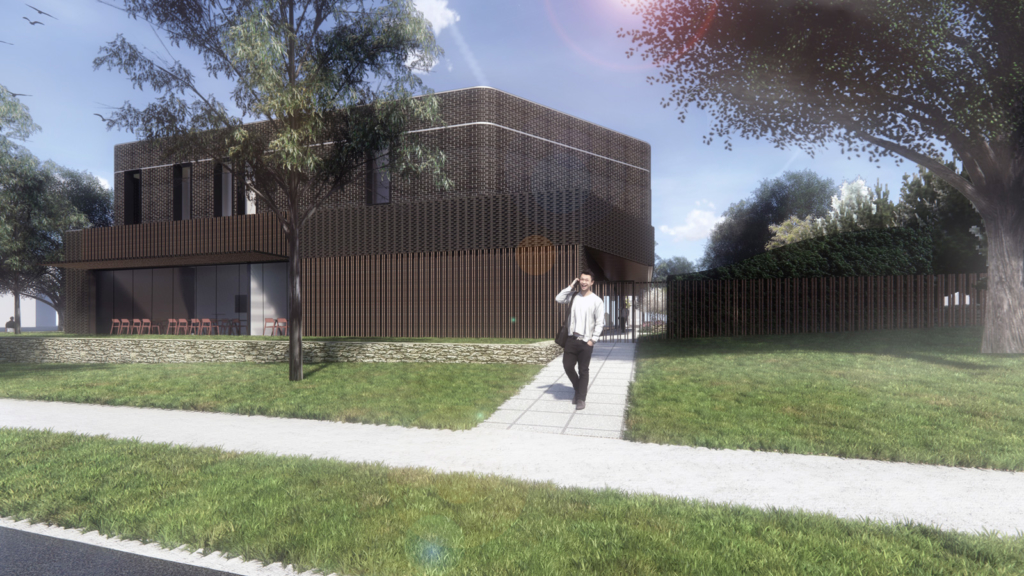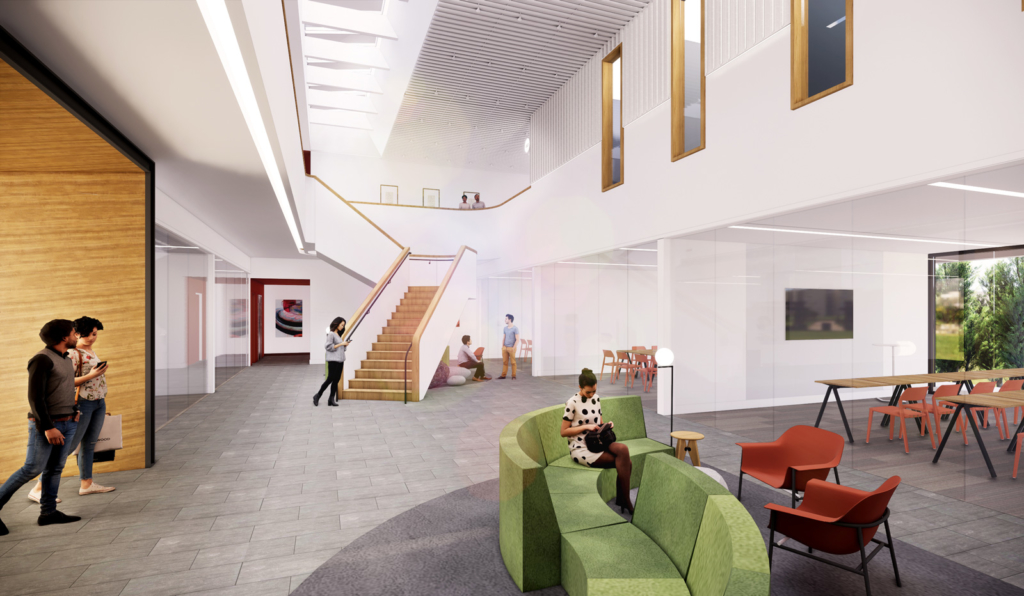Recent Project
Living Design
KCAI breaks ground on Paul and Linda DeBruce Hall
Envisioned as a place that will redefine the student experience, Paul and Linda DeBruce Hall will be home to multiple departments on the Kansas City Art Institute campus. After a year of design and program development, construction will kick off this spring.
This building is unique in the grander landscape of KCAI’s campus. As the future home for Art History, Creative Writing, Entrepreneurial Studies and Liberal Arts, it is one of the few buildings on campus that every student will visit during their time at KCAI. Additionally, it will be a “one-stop shop” that consolidates multiple student services and operations currently scattered across campus into a single locale.
PEOPLE + PLACES + CONCEPT
Our design approach merges client and context into a cohesive concept. We believe the combination of these three things – people, places and concept – is essential to create meaning. Every variable of this equation was multiplied during the design of KCAI’s new Center. To reach a meaningful solution, our approach was not about a single user group, place or concept, but rather several groups of people, representing multiple communities and incorporating numerous concepts.
PEOPLE
Design has the potential to create connections between people, communities and the environment. Founded in 1885, KCAI is one of the oldest art and design colleges in the United States. The Center is a momentous step for KCAI, and multiple stakeholders helped guide the vision of this building. We recognized early on the impact a building of this scale would have on the immediate and surrounding campus community, and over the course of nine months, our design team facilitated and led almost two dozen meetings leading up to approval from the Board of Zoning and Appeals. These meetings included focused workshops with students, faculty and staff, numerous design presentations to the KCAI team and Board of Trustees, and focused meetings with multiple neighborhood associations.
PLACES
All spaces are unique to their respective history and geographic location. KCAI’s 15-acre campus is nestled in the Southmoreland Historic Neighborhood, adjacent to the historic Rockhill Neighborhood, and flanked by the city’s most prominent art museums – the Nelson-Atkins Museum of Art, and the Kemper Museum of Contemporary Art. Each of these places played a valuable role in shaping the Center’s design and character.

Because of its particularly-visible location at the corner of 44th and Oak, the Center interfaces equally with the campus community, neighboring residents and nearby cultural institutions. We conducted extensive research to not only consider the histories impacting the Center’s site and purpose, but to also understand the specific typologies, materiality and landscape that will surround the building.
CONCEPT
Multiple design moves connect the Center to its place and people, but the concept was first informed by defined principles given to our team early on. The Center would be a flexible space, serve a diverse user group, and creatively accommodate interaction and collaboration. It would speak to its surrounding place, and house spaces for focus and work, relaxation and inspiration.

In repeatedly walking the site and historic neighborhoods, our team identified multiple existing elements that informed the design concept. One prominent element that differentiates the Southmoreland and Rockhill neighborhoods from others in Kansas City is the use of limestone landscape walls. That unifying concept was carried through to the Center’s site, and a similar wall was designed to frame the site and speak to neighboring communities.
While the Nelson and Kemper are large-scale institutions, the Center is scaled to fit appropriately with the Southmoreland and Rockhill communities. Our team took cues from both brick and stone being used jointly on adjacent sites and integrated these materials to further blend the Center with its local context. The neighborhoods’ use of curved brick and stone is an influential design move in the form of the building, as well.

Another unifying element carried into the design is the emphasis of a front door as entry portal. There are remarkable examples throughout the neighborhoods of unique front doors, including the entry to Mineral Hall across the street. We capitalized on this design move to create a special piece for KCAI and the arts community, as well. The entry will be a tribute to art historians, with the names of prominent figures laser cut into panels made by KCAI students.
The Center’s interior hinges around a public atrium that connects the building’s various activities and user groups. Classrooms and administrative operations are placed around the interior perimeter of the building to connect students and staff with the exterior landscape and context. Developed from the idea of classrooms in a garden, a courtyard garden will be a place of relaxation and inspiration, complementing the interior work and focus spaces.

We are incredibly honored to be working alongside KCAI and the Southmoreland and Rockhill neighborhoods in creating a place that is meaningful for students, faculty, staff and the broader campus community. This project is deeply-rooted in collaboration and includes McCown Gordon as general contractor, Henderson Engineers, PMA Engineering and SK Design Group as engineering consultants, and Hoerr Schaudt as landscape architect. The official press release from KCAI can be read here.